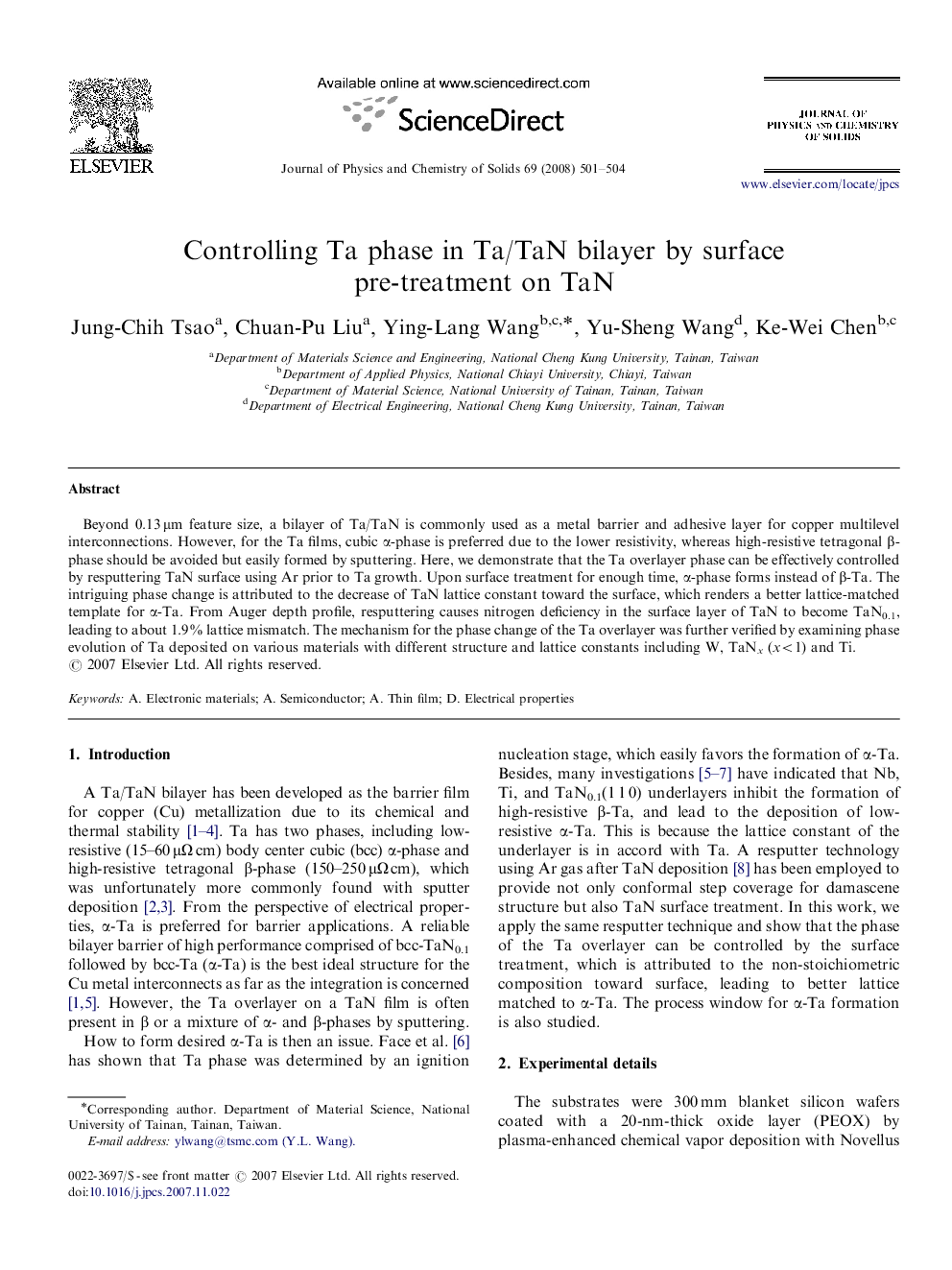| Article ID | Journal | Published Year | Pages | File Type |
|---|---|---|---|---|
| 1518265 | Journal of Physics and Chemistry of Solids | 2008 | 4 Pages |
Abstract
Beyond 0.13 μm feature size, a bilayer of Ta/TaN is commonly used as a metal barrier and adhesive layer for copper multilevel interconnections. However, for the Ta films, cubic α-phase is preferred due to the lower resistivity, whereas high-resistive tetragonal β-phase should be avoided but easily formed by sputtering. Here, we demonstrate that the Ta overlayer phase can be effectively controlled by resputtering TaN surface using Ar prior to Ta growth. Upon surface treatment for enough time, α-phase forms instead of β-Ta. The intriguing phase change is attributed to the decrease of TaN lattice constant toward the surface, which renders a better lattice-matched template for α-Ta. From Auger depth profile, resputtering causes nitrogen deficiency in the surface layer of TaN to become TaN0.1, leading to about 1.9% lattice mismatch. The mechanism for the phase change of the Ta overlayer was further verified by examining phase evolution of Ta deposited on various materials with different structure and lattice constants including W, TaNx (x<1) and Ti.
Related Topics
Physical Sciences and Engineering
Materials Science
Electronic, Optical and Magnetic Materials
Authors
Jung-Chih Tsao, Chuan-Pu Liu, Ying-Lang Wang, Yu-Sheng Wang, Ke-Wei Chen,
